520 computers, 470 projectors, 10,000 square metres of space – a new digital art museum in Tokyo by teamLab and Mori Building presents an unprecedented world of complex spaces.

‘Universe of Water Particles on a Rock Where People Gather’ in the museum’s ‘Borderless World’ zone (one of five zones). Water appears to flow in from other zones
July 24th, 2018
In his in-depth exposition of teamLab , Dr Yukio Lippit (Professor, History of Art and Architecture, Harvard University) provides an insightful introduction to teamLab’s origin, which this article borrows for a more holistic understanding of the collaborative’s work.
Founded by a group of engineers (Inoko Toshiyuki, Aoki Shunsuke, and Yoshimura Jō) from top universities in Tokyo during the Internet bubble at the beginning of the 21st century, teamLab started off in the field of web design, where initial success was found. Subsequent development in Internet technology and the momentum towards user-generated content helped to chart teamLab’s creative direction as ‘interconnectivity’ and ‘interactivity’ became the collaborative’s prominent themes.
While these themes are evident in the approximately 50 digital artworks featured in ‘MORI Building DIGITAL ART MUSEUM: teamLab Borderless’, it is teamLab’s masterful play on the boundary between art and science that creates the surreal aesthetic experience in their creations.
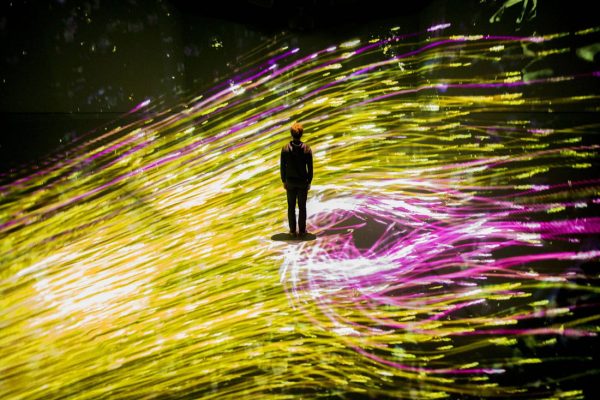
‘The Way of the Sea, Transcending Space – Colours of Life’ in the ‘Bordlerless World’ zone features a shoal of fish in a ‘cave universe’
Their adeptness at moulding art and science together can be directly traced to the diversity of talents at teamLab – an interdisciplinary group of specialists such as artists, programmers, engineers, animators, mathematicians, architects, et cetera. This unparalleled scale and diversity sets teamLab apart from other art collectives. However, the feat of managing such an eclectic, creative group toward a common vision should not go unmentioned.
teamLab’s works are constantly evolving. The digital world can be one filled with negative energy (cyber-bullying, fake news, election manipulation). teamLab’s more recent works are decidedly intent on bringing out the benign aspects of this technology – by rethinking and showcasing the possibilities of augmented learning and play (for example, teamLab Athletic Forest). According to Dr Lippit, this direction can be read as an “anti-techno-dystopia” response from the creative practice.
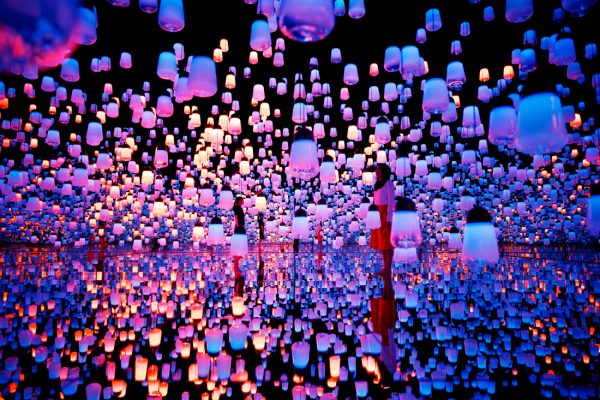
‘Forest of Resonating Lamps’ in the ‘Forest of Lamps’ zone
This vision is also perhaps what attracted Mori Building, an innovative Tokyo-based urban developer and strong advocate of art and education. This like-minded partnership brought about the MORI Building DIGITAL ART MUSEUM: teamLab Bordless, boosting Tokyo’s creative edge as a city and also making teamLab’s works more accessible to the public.
The collaborative interdisciplinary formula of teamLab holds important learning points for architecture, which is increasingly limited in its traditional role. In fact, there has been movement in that direction, such as the formation of UNSense by UNStudio this year. If the inertia for change can be overcome, exciting possibilities await as we imagine the kind of revolutionary experiences created by teamLab breaking out of the boundaries of an exhibition hall and entering the daily lives of people.

‘Universe of Water Particles on a Rock Where People Gather’ in the museum’s ‘Bordless World’ zone (one of five zones). Water appears to flow in from other zones
“As people walk freely around teamLab Borderless they lose themselves in the artwork world. The borderless artworks transform according to the presence of people, and as we immerse and meld ourselves into this unified world, we explore a new relationship that transcends the boundaries between people, and between people and the world.” – Toshiyuki Inoko, Founder of teamLab
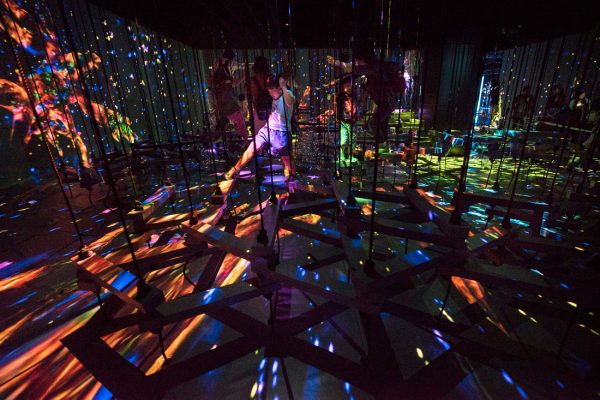
‘Aerial Climbing Through a Flock of Colored Birds’ in the Athletics Forest zone is a floating three-dimensional space where one person’s movement affects the experience of others
teamLab is represented by Pace Gallery. All images are: teamLab, Exhibition view of ‘MORI Building DIGITAL ART MUSEUM: teamLab Borderless’, 2018, Odaiba, Tokyo, © teamLab
INDESIGN is on instagram
Follow @indesignlive
A searchable and comprehensive guide for specifying leading products and their suppliers
Keep up to date with the latest and greatest from our industry BFF's!
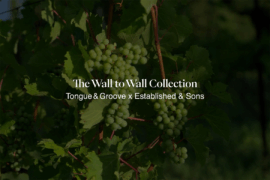
London-based design duo Raw Edges have joined forces with Established & Sons and Tongue & Groove to introduce Wall to Wall – a hand-stained, “living collection” that transforms parquet flooring into a canvas of colour, pattern, and possibility.
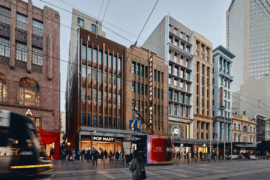
Merging two hotel identities in one landmark development, Hotel Indigo and Holiday Inn Little Collins capture the spirit of Melbourne through Buchan’s narrative-driven design – elevated by GROHE’s signature craftsmanship.
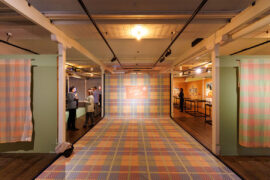
At the National Wool Museum, a new exhibition traces the evolution of Godfrey Hirst and its long-standing role in shaping Geelong’s industrial and design identity.

Auckland Design Week returns for its third edition in March, unveiling an expanded programme and a renewed focus on the relationship between people, communities and the places they shape.
The internet never sleeps! Here's the stuff you might have missed

True sustainability doesn’t have to be complicated. As Wilkhahn demonstrate with their newest commercial furniture range.

In creating interior spaces that enhance the wellbeing and experience of people, true responsible sourcing also considers the impact of materials and making.